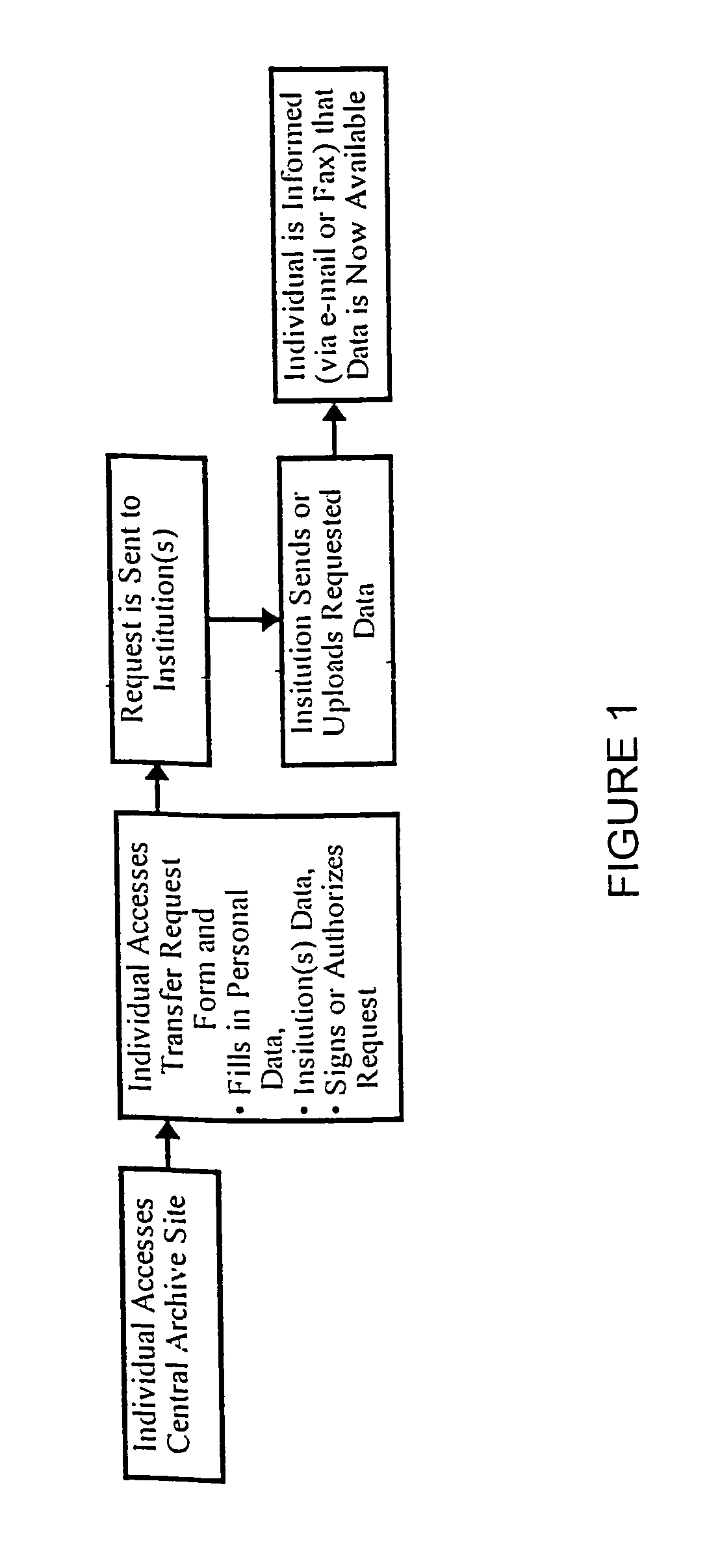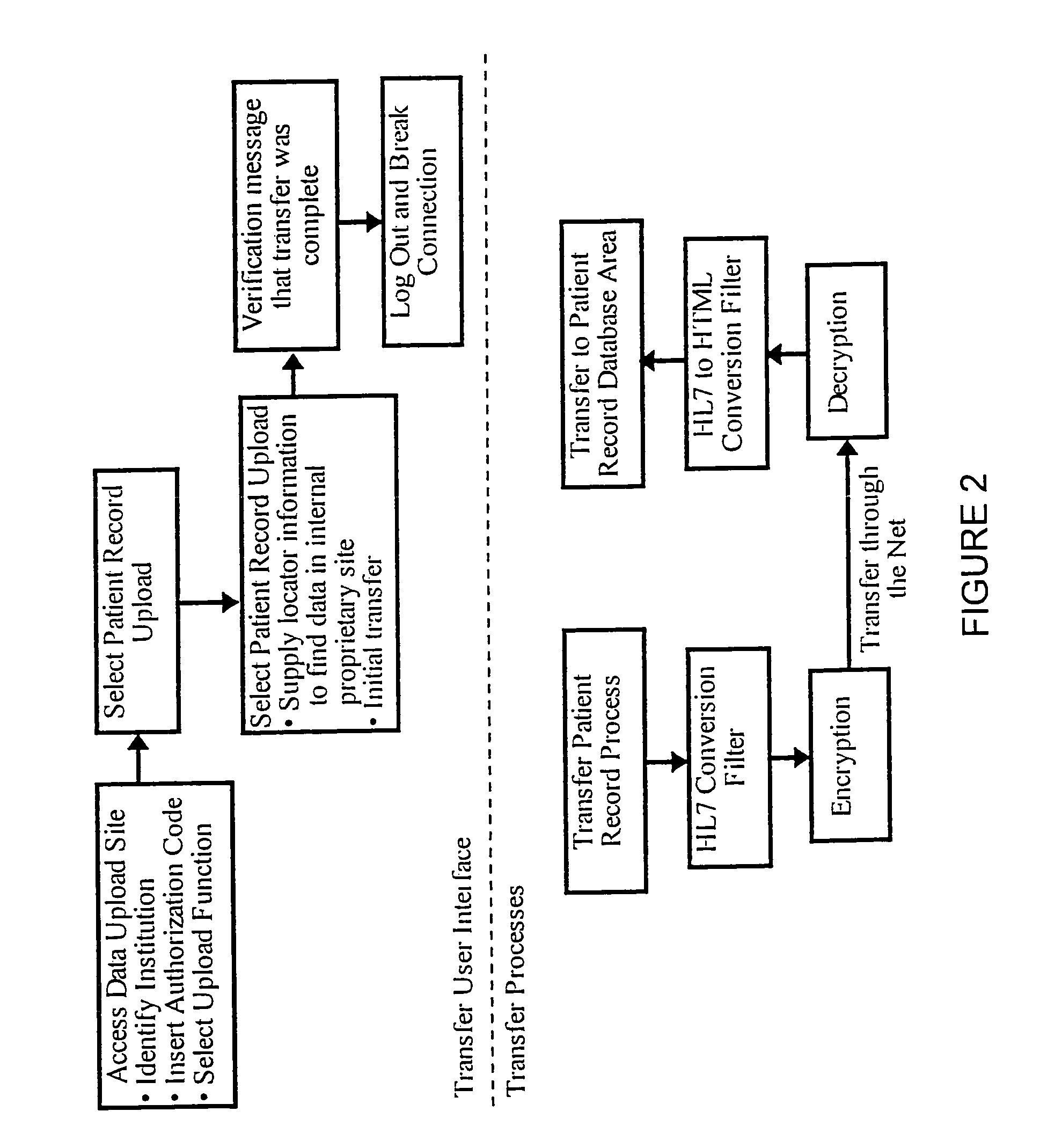Method for consolidating medical records through the world wide web
a medical record and world wide web technology, applied in the field of management of medical/dental patient records, can solve the problems of multi-institution, national or international medical repository, and difficulty in transferring data between proprietary systems, and achieve the effect of not having predictable normal ethernet delivery, and not having a large area
- Summary
- Abstract
- Description
- Claims
- Application Information
AI Technical Summary
Benefits of technology
Problems solved by technology
Method used
Image
Examples
Embodiment Construction
[0034]This invention takes advantage of the fact that a number of the critical elements required to make a fully integrated medical information resource are already available. This invention combines these elements into an innovative information access / management system which may be assessed via the World Wide Web.
[0035]The requirements include:
[0036]1) Defined common formats for all relevant medical data objects;
[0037]2) A world wide digital data interconnection infrastructure;
[0038]3) Computer-based data management systems large enough and fast enough for the amount of data likely to be stored;
[0039]4) A universal data interface model which will allow all types of data viewing clients to review said data;
[0040]5) A method for acquiring medical data from instruments, imaging systems, medical record keeping systems, and manual (paper-based) records; and
[0041]6) A method for motivating institutions and individuals to present said data to the central archival authority.
[0042]Beginning...
PUM
 Login to View More
Login to View More Abstract
Description
Claims
Application Information
 Login to View More
Login to View More - R&D
- Intellectual Property
- Life Sciences
- Materials
- Tech Scout
- Unparalleled Data Quality
- Higher Quality Content
- 60% Fewer Hallucinations
Browse by: Latest US Patents, China's latest patents, Technical Efficacy Thesaurus, Application Domain, Technology Topic, Popular Technical Reports.
© 2025 PatSnap. All rights reserved.Legal|Privacy policy|Modern Slavery Act Transparency Statement|Sitemap|About US| Contact US: help@patsnap.com



